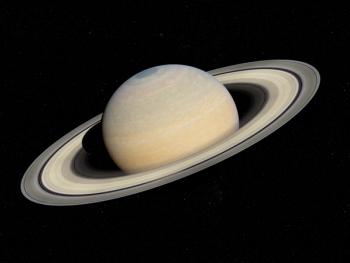
Tröger’s Base Derivatives Studied Using HPLC
Scientists from the Czech Republic recently created new practices to study different Tröger’s base isomers.
In a recent study led by scientists from the University of Chemistry and Technology in Prague, Czech Republic, used high performance liquid chromatography (HPLC) and spectroscopy to study different Tröger’s base (TB) isomers. The team of researchers published their findings in Spectrochimica Acta Part A: Molecular and Biomolecular Spectroscopy (1).
Porphyrins and complexes with metals, otherwise known as metalloporphyrins, are macrocyclic compounds that have structural motifs that play parts in various functional biomolecular systems. These systems can be used to absorb light, bind various molecules, or catalyze chemical reactions. Due to metalloporyphrins’ binding abilities, researching use in chiral recognition has been an important task. However, these compounds are also planar and achiral molecules, meaning there is a need for chemical modification before they are used in chiral recognition. A promising approach for generating chiral metalloporphyrin receptors is based on the formation of dimers of metalloporphyrins via a rigid TB chiral linker.
The TB structure has two aromatic rings perpendicular to each other which, when fused to the central bicyclic framework, enable the formation of a rigid cleft-like V-shaped scaffold possessing two nitrogen stereocenters (2). Derivatives of TB are widely used as building blocks in supramolecular chemistry and molecular engineering as rigid scaffolds, which provide well-defined spatial geometry and two fettered stereogenic centers on nitrogen atoms. In 2000, a constitutional isomer of TB, spiro-Tröger’s base (spiroTB) and its formation was first observed; however, despite years of study, little information is known about spiroTB derivatives.
In this study, the chiral properties of nickel(II) complexes of porphyrin-porphyrin Tröger's base and porphyrin-chlorin spiro-Tröger's base with phenyl or 3-methoxyphenyl substitutions in meso-positions were monitored. The enantioseparation of racemic mixtures was investigated using HPLC on an analytical ReproSil Chiral-NR column. Afterwards, the purity of the isolated enantiomers was determined using HPLC and ultraviolet–visible (UV–Vis) spectroscopy. The absolute configurations of the isolated enantiomers were determined by evaluating the Cotton effect in electronic circular dichroism spectra. The determination was supported by TDDFT calculations, in which good agreement was achieved between the experimental and simulated spectra.
Overall, the scientists observed better chromatographic resolution for spiroTB enantiomers than for standard TB enantiomers. However, for both types of enantiomers, the enantiomeric resolution was robust and enabled preparative enantioseparation of spiroTB derivatives, the first of its kind. Afterwards, the scientists were able to combine UV–Vis and electronic circular dichroism (ECD) spectroscopy with time-dependent density functional theory (TDDFT), which is a reformulation of time-dependent quantum mechanics, where the fundamental variable is the density rather than the many-body wave functions (3). This combination was used to determine the absolute configurations of all compounds, with the results being that TB and spiroTB enantiomers are eluted in the same order.
“We believe that high molar ellipticity values and superior enantioseparation of nickel(II) porphyrin-chlorin spiroTB over TB, together with its ability to absorb light and act as a catalyst, will attract the attention of scientists in various fields,” the scientists concluded in the paper (1).
References
(1) Navrátilová, T.; Dobšíková, K.; Králik, F.; Havlík, M.; et al. Spectrochim. Acta Part A: Mol. Biomol. Spectrosc. 2024, 316, 124308. DOI:
(2) Ma, C.; Sun, Y.; Yang, J.; Guo, H.; Zhang, J. Catalytic Asymmetric Synthesis of Tröger’s Base Analogues with Nitrogen Stereocenter. ACS Cent. Sci. 2023, 9 (1). 64–71. DOI:
(3) Marques, M. A. L.; Gross, E. K. U. Time-Dependent Density Functional Theory. Annu. Rev. Phys. Chem. 2004, 55, 427–455. DOI:
Newsletter
Get essential updates on the latest spectroscopy technologies, regulatory standards, and best practices—subscribe today to Spectroscopy.





